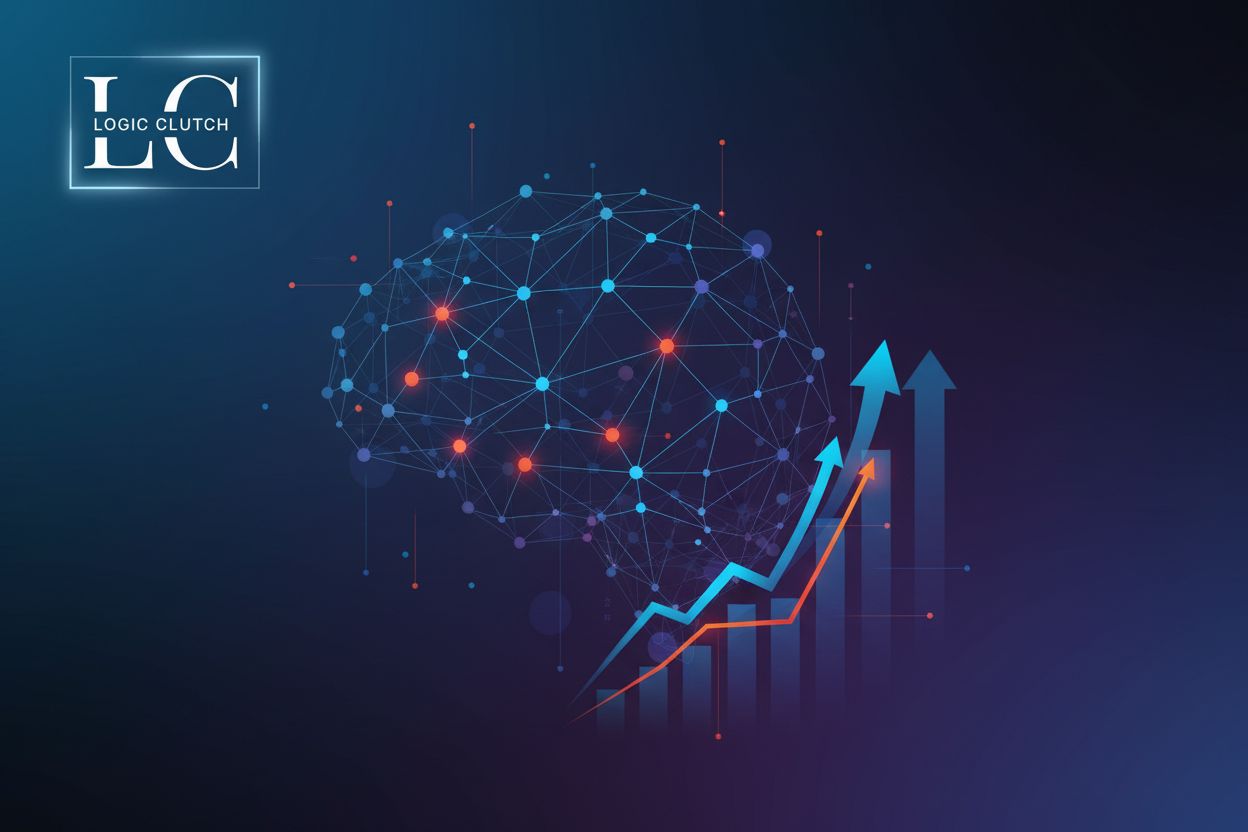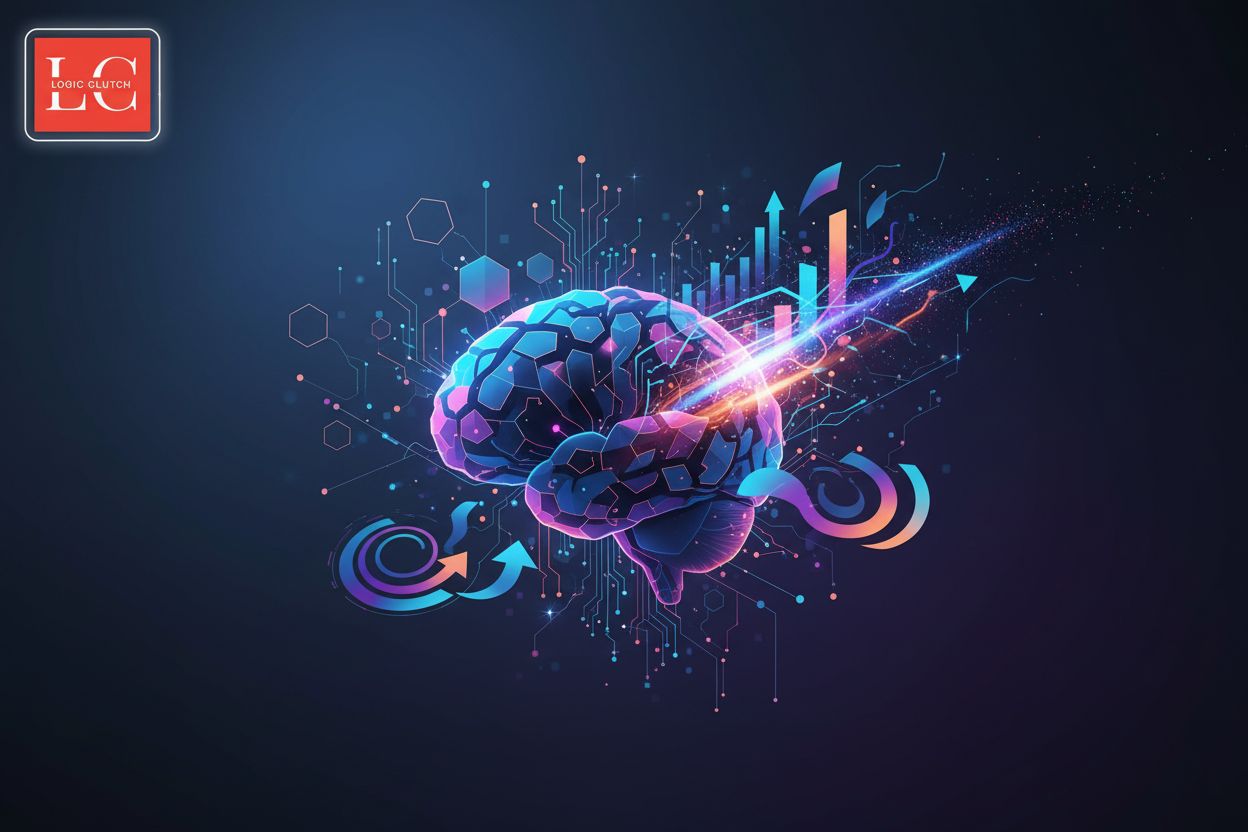Implementing Semantics and AI in Private Data Solutions
TL;DR
Introduction: The Convergence of Semantics and AI in Data Management
Alright, so you wanna know what's up with semantics and ai in data management? Honestly, it's kinda like teaching a computer to actually understand what it's reading, not just crunch numbers.
See, we're drowning in data. I mean, enterprises are dealing with massive amounts of the stuff – customer records, transaction logs, sensor readings, social media feeds, you name it. And it's only getting more complicated. (why is everything so hard in a large organization? : r/programming) You need something robust and secure to handle all that private data, right? And everyone's talking about data-driven decisions, but how can you make good calls if you can't even trust your data? Making data-driven decisions means using insights from data to guide business strategies, product development, or operational adjustments, rather than relying on gut feelings. Current methods often fall short because they struggle with the sheer volume, variety, and complexity of modern data, leading to incomplete or inaccurate insights.
- Semantics explained: It's all about giving data meaning. Like, instead of just seeing "123 Main st", the system knows it's an address, what city its in and who lives there. It's about understanding the intent and context behind the data. Think of it as adding context so the computer isn't just blindly following instructions, it's understanding the implications. This goes beyond just knowing a value is a number or text; it's about knowing that "123 Main St" is a physical location, and that this location is associated with a customer.
- ai to the rescue: ai is there to dig deep and make sense of the data, spotting trends, and patterns. It's the analyst that never sleeps and can handle way more than any human team ever could. Specifically, techniques like machine learning (ML) can identify subtle correlations, and natural language processing (NLP) can extract meaning from unstructured text.
- semantics + ai = magic: when you combine semantics and ai, you're not just processing, you're gaining insights. Better governance, higher quality, and reliable data which equals smarter business decisions.
Well, it's not just about being trendy. Better data governance is huge – knowing where your data comes from, who can access it, and how its used. This, in turn, improves the overall quality and reliability of everything. (How to Effectively Manage Change for Improved Reliability)
Diagram 1 is a visual representation of how semantics and AI converge to enhance data management.
So, where does this all lead? Next up, we'll dive into why semantics and ai are becoming absolutely critical for enterprises.
Understanding Semantics: Enhancing Data Meaning
Okay, so semantics – it's not just about fancy words, right? It's about making our data mean something. It's like, instead of just seeing a bunch of numbers, the system actually understands what those numbers represent.
Think of semantic data modeling as building a map for your data. It's about defining the relationships between different pieces of info so the computer doesn't get lost. The principles are pretty straightforward, but they can have a big impact.
Ontologies and Knowledge Graphs: These are the backbone. An ontology defines the concepts in your domain (think "customer", "product", "order") and how they relate. A knowledge graph then uses these definitions to connect actual data points. It's like having a detailed blueprint for your data universe – and it's this detailed blueprint that makes all the difference.
Examples: RDF (Resource Description Framework) is a standard model for data interchange on the web. OWL (Web Ontology Language) builds on top of RDF to allow for more complex definitions and reasoning. It's like using Lego bricks (RDF) to make more complex structures with instructions (OWL). RDF defines statements as subject-predicate-object triples, forming a graph. OWL adds richer vocabulary for expressing complex relationships and constraints, enabling more sophisticated reasoning.
This simple graph shows how "John Doe" is related to "Awesome Gadget Co." through the "is a customer of" relationship.
So why should you even bother with this? What's the end game? Trust me, it's worth it.
- Discoverability Boost: Imagine trying to find a specific file on a cluttered hard drive. Semantics is like having a super-powered search engine that understands what you're looking for, not just keyword matching. This is massive for research and development in pharmaceuticals, where finding relevant data quickly can shave months off development time.
- Integration Magic: Ever tried merging data from two different departments and wanted to pull your hair out? Semantic technologies help bridge those gaps. No more wrestling with mismatched formats, just smooth data integration, which is a godsend in finance where you're pulling data from all sorts of places.
- Query Power: Forget basic searches. Semantics lets you ask complex questions and get reasoned answers. For example, in retail, you can ask, "Which customers are likely to buy product X and live in area Y?" and get a list based on actual relationships and behaviors, not just a simple demographic filter.
- Interoperability and Reuse: Data becomes less of a silo and more of a shared asset. This is crucial in healthcare, where different systems need to share patient data securely and accurately.
Don't think you have to start from scratch. You can actually add semantic metadata to your existing datasets. Think of it as adding labels to your old photo albums, so they're actually searchable.
- Annotation Tools: There are tools designed to help you add context to your data. These tools can help you define the meaning of your data elements and link them to existing ontologies.
- Real-World Example: Imagine a logistics company uses semantic annotation to tag all its shipping data. Now, instead of just seeing "Package ID 12345", the system knows it's a fragile item, going to a specific address, and requires special handling. This is achieved by applying semantic tags like
rdf:type :FragileItem,schema:deliveryAddress :AddressXYZ, andcustom:handlingRequirement :SpecialHandling. These tags link the data to predefined concepts and properties within an ontology, allowing systems to understand and act upon the information.
Look, it ain't all sunshine and roses. There are hurdles, for sure.
- Ontology Overload: Creating and managing ontologies can get complex fast. It needs specialized skills and a deep understanding of the domain.
- Data Chaos: Getting everyone on the same page with data standards? Good luck. Harmonizing data across different systems is a pain.
- Expertise Gap: You need people who get this stuff. Finding folks with the right blend of domain knowledge and semantic skills isn't easy.
But hey, every worthwhile endeavor has its challenges, right? The key is to be aware of them and plan accordingly.
So, what's next? Time to look at how semantics and ai can actually work together to solve some real-world problems.
AI-Powered Data Intelligence: Transforming Raw Data into Actionable Insights
Alright, so you're thinking ai can just magically turn your data into gold, huh? Well, not quite magic, but it gets pretty close. Let's break down how ai is actually helping to transform that raw data into something you can use.
First off, ai algorithms? They're basically data-hungry beasts that can automatically chew through massive datasets. Think of it like this: you used to need a whole team of analysts to comb through spreadsheets, but now ai can do it in a fraction of the time.
Machine learning (ml) is where things get really interesting. Ml algorithms are crazy good at spotting patterns that humans would miss. We're talking about predicting customer behavior, identifying fraud, or even forecasting equipment failures before they happen.
And don't forget about natural language processing (nlp). If you're dealing with a ton of unstructured data – customer reviews, social media posts, support tickets – nlp can help you understand what's actually being said. It's like having a super-powered sentiment analysis tool.
It's not just about analyzing the good data, but also about fixing the bad. ai is getting surprisingly good at identifying and correcting data errors. It's like having an automated spellchecker for your entire database, so you can trust the data more.
ai-driven data validation and cleansing processes are becoming more common. These processes can automatically flag inconsistencies, missing values, and other data quality issues. They achieve this through techniques like anomaly detection (identifying data points that deviate significantly from the norm), pattern recognition (spotting recurring errors), and rule-based systems (applying predefined data quality rules).
Plus, ai can help with automated data governance and compliance. ai can monitor data access, identify potential security risks, and even ensure that you're meeting regulatory requirements. It's like having a built-in compliance officer that never sleeps.
Predictive modeling and forecasting are where ai really shines. Ai algorithms can analyze historical data to identify trends and predict future outcomes. It's not perfect, but it can give you a serious edge.
For example, in retail, ai can predict which products are likely to be popular next season, helping you optimize inventory and marketing efforts. In finance, ai can forecast market trends and identify investment opportunities.
A study by heigit.org on road traffic analysis, for instance, highlights how deep learning models can use data to estimate vehicle speeds, contributing to better traffic flow management.
Ultimately, the benefit of using ai for proactive decision-making is about staying ahead of the curve. Instead of reacting to problems as they arise, you can anticipate them and take action before they impact your business.
Of course, there are ethical implications to consider. It's important to be aware of potential biases in ai algorithms and to ensure that they're used fairly and transparently.
Bias, fairness, and transparency are crucial considerations. You need to make sure that your ai algorithms aren't discriminating against certain groups or making decisions that are difficult to understand. For example, an AI used for hiring might inadvertently favor candidates with certain backgrounds if trained on biased historical data. Mitigating this involves using diverse training datasets, implementing bias detection tools, and ensuring explainability in AI decisions.
Responsible ai development and deployment are key to building trust and ensuring that ai is used for good. That means carefully considering the potential impact of ai on society and taking steps to mitigate any negative consequences.
So, how can you actually make all this happen? Well, there are different approches. Let's dive into the practical applications of semantics and ai now.
Integrating Semantics and AI: A Synergistic Approach
Okay, so you're thinking about mashing up semantics and ai? It's not just some buzzword bingo, it's about making ai smarter with context. Think of it like giving ai a pair of glasses so it can see the bigger picture.
- smarter algorithms: Semantic data models act like a cheat sheet for ai. Instead of blindly guessing, the ai knows what each piece of data means. This cuts down on errors and makes those algorithms way more accurate. For example, in fraud detection, knowing that multiple addresses are semantically linked to a single individual, rather than just being random strings, significantly boosts ai's ability to flag suspicious activity.
- Context is King (or Queen): ai thrives on context, and semantics is the royal provider. It takes raw data and adds layers of meaning. Imagine ai trying to analyze customer feedback without knowing the sentiment or the product being discussed. Semantics swoops in, tags the data with relevant concepts, and bam – actionable insights.
- Relationship Rehab: Ever try to untangle a messy family tree? Semantics does that for data. ai can then trace connections that would otherwise be invisible, seeing the relationships between customers, products, and transactions. This is huge in supply chain management, where understanding intricate supplier networks helps ai predict disruptions before they happen.
- auto-magical Metadata: Manually tagging data with semantics? Ain't nobody got time for that. ai can crawl through your data, sniffing out patterns and relationships, and automatically generate semantic metadata. Think of it as ai being your own personal librarian, organizing everything for you. And hey, it works with scheduling languages too. As a 2024 study on scheduling languages shows "Scheduling languages express to a compiler a sequence of optimizations to apply". Scheduling Languages: A Past, Present, and Future Taxonomy This sentence, while about scheduling languages, illustrates how specific languages can convey precise instructions and meaning to a system (the compiler), similar to how semantic annotations provide meaning to data for AI.
- Enrichment Algorithms: ai isn't just about finding semantics, it's about adding to them. Imagine a customer database with incomplete job titles. ai can use nlp to analyze the available data, plus external sources, and fill in the gaps, enriching the data with standardized job roles and industry classifications. The result? More accurate segmentation and personalized marketing campaigns, and no more hair-pulling.
- Real-World Semantic ai: Let's say a logistics company uses ai to analyze its shipping data. The ai automatically identifies that a certain "Package ID" is consistently delayed due to weather in a particular region. This allows the company to proactively reroute future shipments and avoid those problem areas, improving delivery times. This is possible because the AI, informed by semantic data, can correlate package delay events with weather data and geographical regions, understanding the causal relationship.
Okay, so what's the big deal? How are companies actually using this stuff?
- smarter cities, brighter futures: integrating ai with semantic data is helping to make smarter cities. For instance, heigit.org writes about the use of deep learning to improve road traffic analysis and estimate vehicle speeds. As noted earlier, heigit.org also touches on the impact of ai in road traffic analysis.
- supply chain superheroes: Imagine a global supply chain, where ai uses semantic data to understand not just what is being shipped, but why, where, and how. This allows for optimizing routes, predicting delays, and proactively managing risks.
- healthcare harmony: In healthcare, semantics and ai can work together to analyze patient data, identify potential drug interactions, and personalize treatment plans. It is about creating a more efficient and effective healthcare system.
Look, it's not all sunshine and rainbows. Integrating semantics and ai isn't exactly a walk in the park.
- Complexity Concerns: Wrangling ontologies, knowledge graphs, and ai algorithms? It's a lot. Break it down into smaller, manageable projects. Start with a well-defined use case and build from there.
- Data Governance: This is where you need a data governance plan. Who owns the data? Who can access it? How is it used? Answer these questions before you start throwing ai at the problem.
- The Talent Tango: Finding folks who get both semantics and ai? Tricky. Consider training existing staff or partnering with specialized consultants to fill the gaps.
Even with its challenges, the payoff is worth it. Semantics and ai together? It's not just the future, it's the present.
Implementing Semantic AI in Private Data Solutions within SalesForce CRM
Alright, so you want to know how to jam some semantic ai into Salesforce crm for private data? It's kinda like giving your crm a brain and a super-secure vault at the same time.
Salesforce isn't just a place to keep track of customers; it's like mission control for your business. It's where all the important data about your customers, your sales, and your marketing efforts lives - and it's gotta be handled right.
- Centralized data: Salesforce acts as a single source of truth, bringing together data from different departments. No more data silos. This, in turn, enables a 360-degree view of your customers, which is pretty crucial for personalized experiences.
- Scalability: As your business grows, salesforce can grow with you. It's designed to handle increasing volumes of data and users without breaking a sweat.
- Customization: You can tailor salesforce to fit your specific business needs. Add custom fields, create custom workflows, and integrate with other systems.
But here's the catch: all that juicy data is a target. You gotta protect it, right? Data privacy and security is non-negotiable, especially with regulations like gdpr and ccpa breathing down your neck.
- Compliance: salesforce offers tools to help you comply with various data privacy regulations. You can manage consent, track data access, and implement data retention policies.
- Encryption: salesforce uses encryption to protect your data both in transit and at rest. This makes it harder for unauthorized users to access sensitive information.
- Access Controls: You get to define who can see what data. Role-based access controls let you restrict access to sensitive information based on job function.
So, how do we get semantic ai into the mix? What is the actual process here? Well, it's about making salesforce smarter and more aware of the meaning behind the data.
- Semantic data models: You can integrate semantic data models with salesforce data to add context and relationships. This allows you to go beyond simple keyword searches and ask more complex questions.
- Semantic Annotation: Use semantic annotation to enrich salesforce records with additional metadata. This makes it easier to discover and understand the data.
- Semantic Search: Implementing semantic search allows users to find information based on meaning, not just keywords. Imagine searching for "customers who are likely to churn" instead of "customers with overdue invoices". It's a game changer.
At Logicclutch, we specialize in salesforce crm solutions, helping businesses integrate semantic technologies for enhanced data management and improved decision-making. Find out how our expertise can transform your salesforce data into actionable insights.
Einstein ai is salesforce's built-in ai platform, and it's pretty powerful. It can do a lot of heavy lifting when it comes to data analysis and automation.
- ai-powered analytics: Einstein analyzes your salesforce data to identify trends, patterns, and relationships. This helps you make better decisions and improve your business outcomes.
- Data validation and cleansing: ai can automatically identify and correct data errors, ensuring that your data is accurate and reliable. It's like having a data quality watchdog that never sleeps.
- Predictive analytics and forecasting: Einstein can predict future outcomes based on historical data. This helps you anticipate customer needs, optimize your sales pipeline, and forecast revenue.
Diagram 2 illustrates the integration of semantic AI within the Salesforce CRM environment.
Okay, so you're sold on the idea. But how do you actually make this happen? It's not as simple as flipping a switch, unfortunately.
- Data migration and integration: Plan your data migration carefully. Ensure that your data is clean, consistent, and properly mapped to the new semantic data models.
- User training and adoption: Train your users on how to use the new semantic ai features. Make sure they understand the benefits and how to leverage them in their daily work.
- Data quality and security: Implement robust data governance policies to ensure data quality and security. Regularly audit your data to identify and correct any errors or inconsistencies.
- addressing common pitfalls: Be prepared for challenges. Ontology management can be complex, requiring careful planning and potentially specialized tools. Getting everyone on the same page with data standards can be tough, necessitating clear communication and buy-in from stakeholders.
Implementing semantic ai in salesforce crm can transform your data into a strategic asset. With careful planning, robust data governance, and a commitment to user training, you can unlock the full potential of your salesforce data and drive better business outcomes. What's next? Let's dive into the future trends and innovations.
Future Trends and Innovations
Okay, so what's next for semantics and ai? Honestly, the future is looking pretty darn interesting, because it's all about making these technologies more accessible and effective for everyone.
semantic web tech is leveling up, big time. we're not just talking about basic ontologies anymore. Think smarter knowledge graphs that can reason and adapt to new info on the fly. It's kinda like giving your data a phd in common sense.
ai algorithms is getting smarter too. It's about moving beyond the "black box" and creating ai that's explainable and trustworthy. Imagine algorithms that can actually tell you why they made a certain decision. That would be something, right?
quantum computing might be the next big thing. it's still early days, but the potential is huge. Imagine being able to analyze massive datasets in the blink of an eye. This could revolutionize complex pattern recognition and optimization problems in data management. That is the potential, anyway.
data management and governance is gonna get a whole lot more important. we're talking about stronger security, better compliance, and more control over your data. It's not just about storing data, it's about protecting it.
edge computing is coming to the forefront. Instead of sending everything to the cloud, you can process data closer to the source. Think faster insights and lower latency, which is great for things like smart factories and autonomous vehicles.
data privacy and security will be at the core of everything. It's all about earning and keeping the trust of your customers. Transparency and control are key.
salesforce is trying to meet the evolving needs of businesses. Think more ai-powered features, better integration with other systems, and stronger security. They're not sitting still, that's for sure. Salesforce is likely to invest in features that leverage semantic data models for more intelligent search, personalized customer experiences, and enhanced data governance capabilities within their platform.
new features are coming to salesforce for semantics and ai. We're talking about smarter search, more personalized experiences, and better data governance.
salesforce's vision for the future is about data-driven decision-making. The idea is to empower businesses to make smarter, faster, and more informed decisions.
So, that's a quick peek into the future. It's all about smarter ai, better data governance, and more accessible technologies. Next, let's wrap things up and talk about how you can get started.
Conclusion: Embracing Semantics and AI for Data-Driven Success
Alright, so we've gone through the whole shebang – semantics, ai, salesforce, the future... But what does it all really mean? It's not just about tech hype; it's about making your data actually work for you.
- Data that Makes Sense: It's not just about having data, is it? It's about having data that's clean, consistent, and actually tells you something useful. Semantics gives your data context, so ai can actually do it's job. Think of it as going from a blurry photo to crystal clear hd.
- Governance on Autopilot: Forget endless compliance headaches. Semantic ai can monitor your data, flag risks, and make sure you're following the rules – automatically. It's a seriously good start for data governance.
- Insights That Matter: ai is great, but it needs a solid foundation. Semantic ai helps you predict customer behavior, optimize processes, and make smarter decisions. Instead of just reacting, you're actually anticipating.
Start small, really. Don't try to overhaul everything at once. Pick a specific problem, a specific use case, and start there.
- Embrace the Culture Shift: It ain't just about the tech, know what i mean? It's about getting everyone on board with a data-driven mindset. Train your people, show them the value, and make data accessible. This means fostering an environment where data is seen as a valuable asset and its use is encouraged across departments.
- Focus on Long-Term Value: It's not a quick fix; it's a long-term investment. Build a strategy, set realistic goals, and be patient. The payoff will be worth it. Long-term value might look like reduced operational costs through better efficiency, increased revenue from more targeted marketing, or improved customer satisfaction due to personalized experiences.
We're on the cusp of a new era, where data isn't just a pile of numbers, it's a strategic asset. Embrace semantics and ai, and you'll be ready to dominate the data-driven future. Don't, and you'll be left behind. Simple as that.
Seriously. Don't get left behind.






